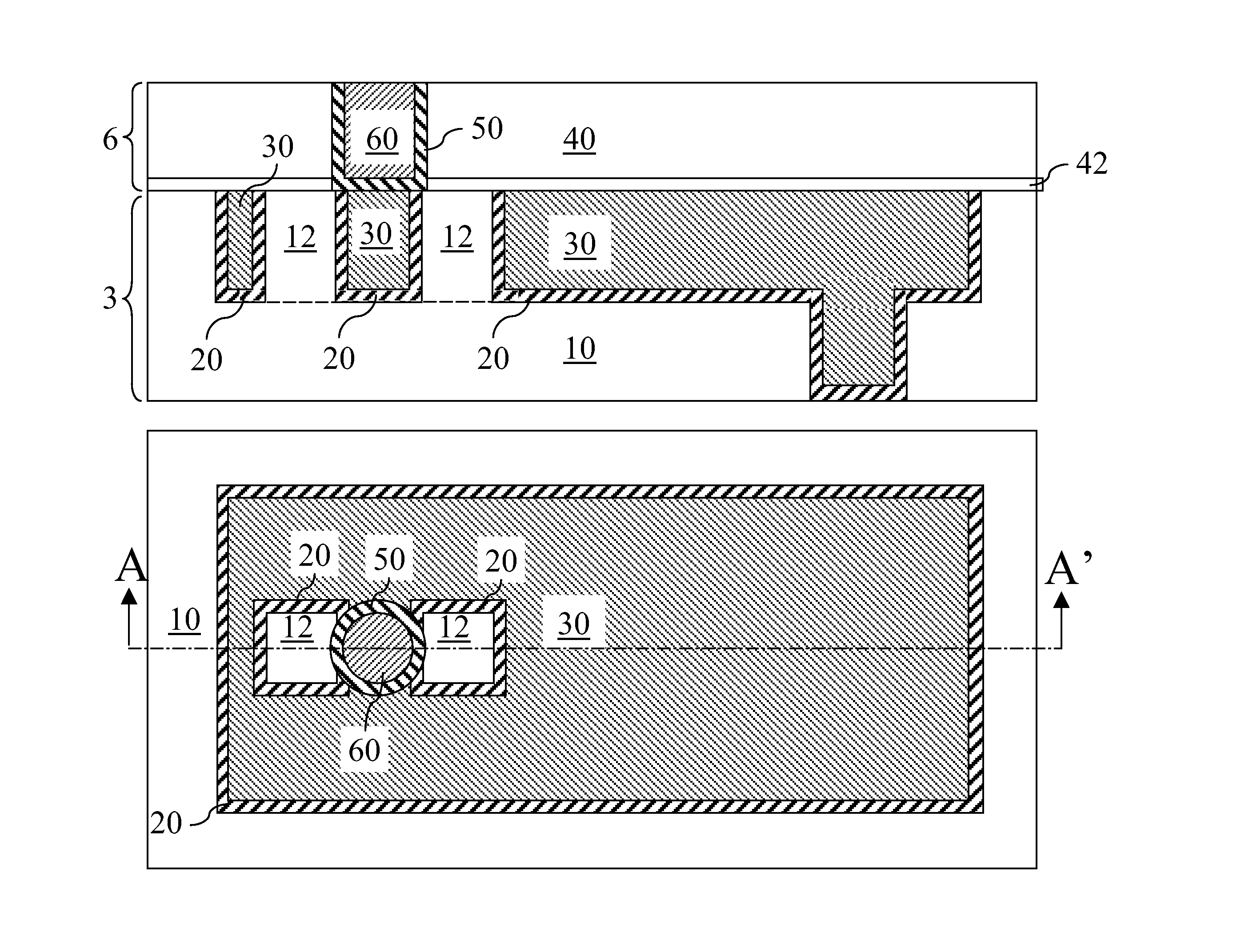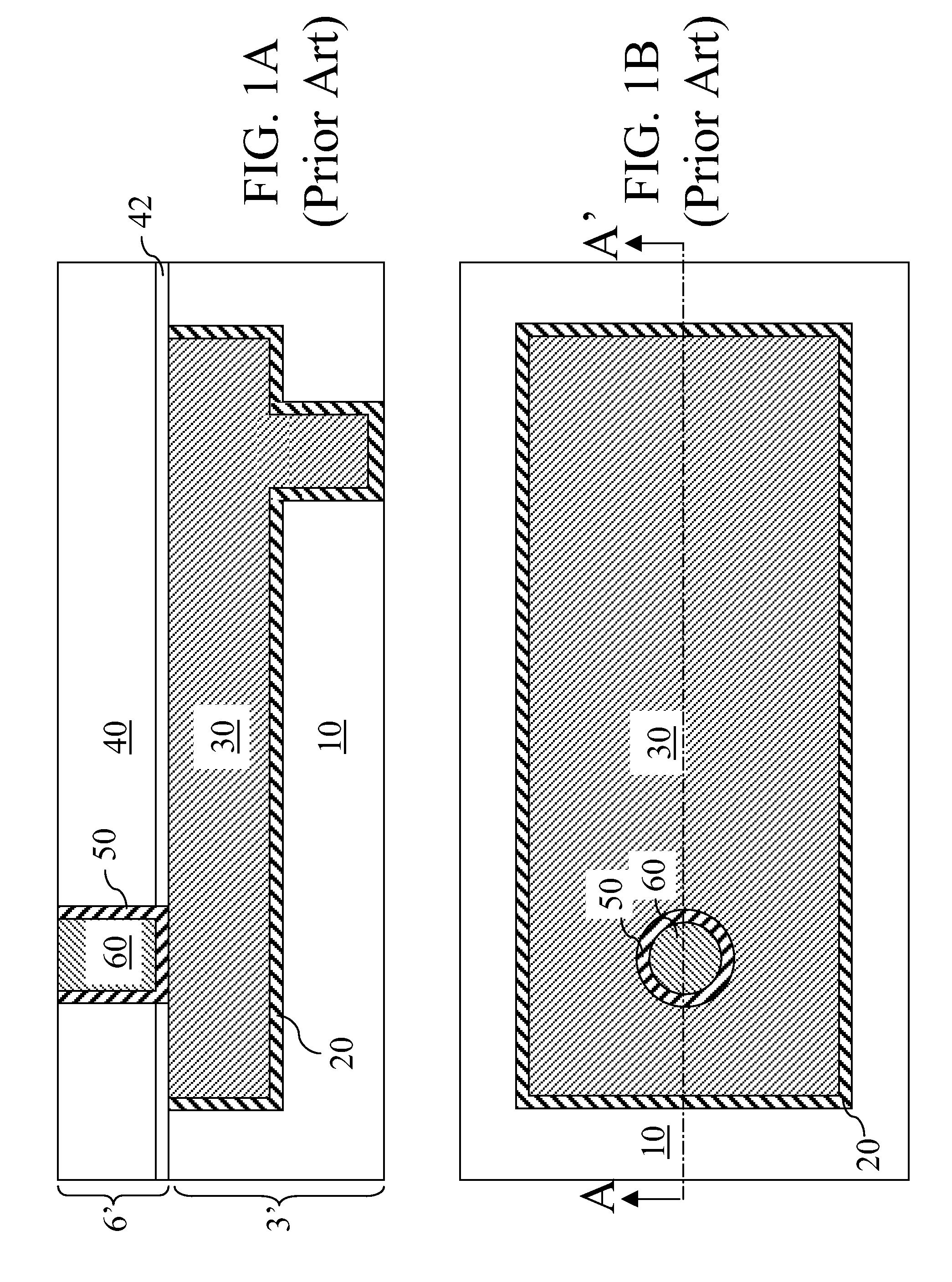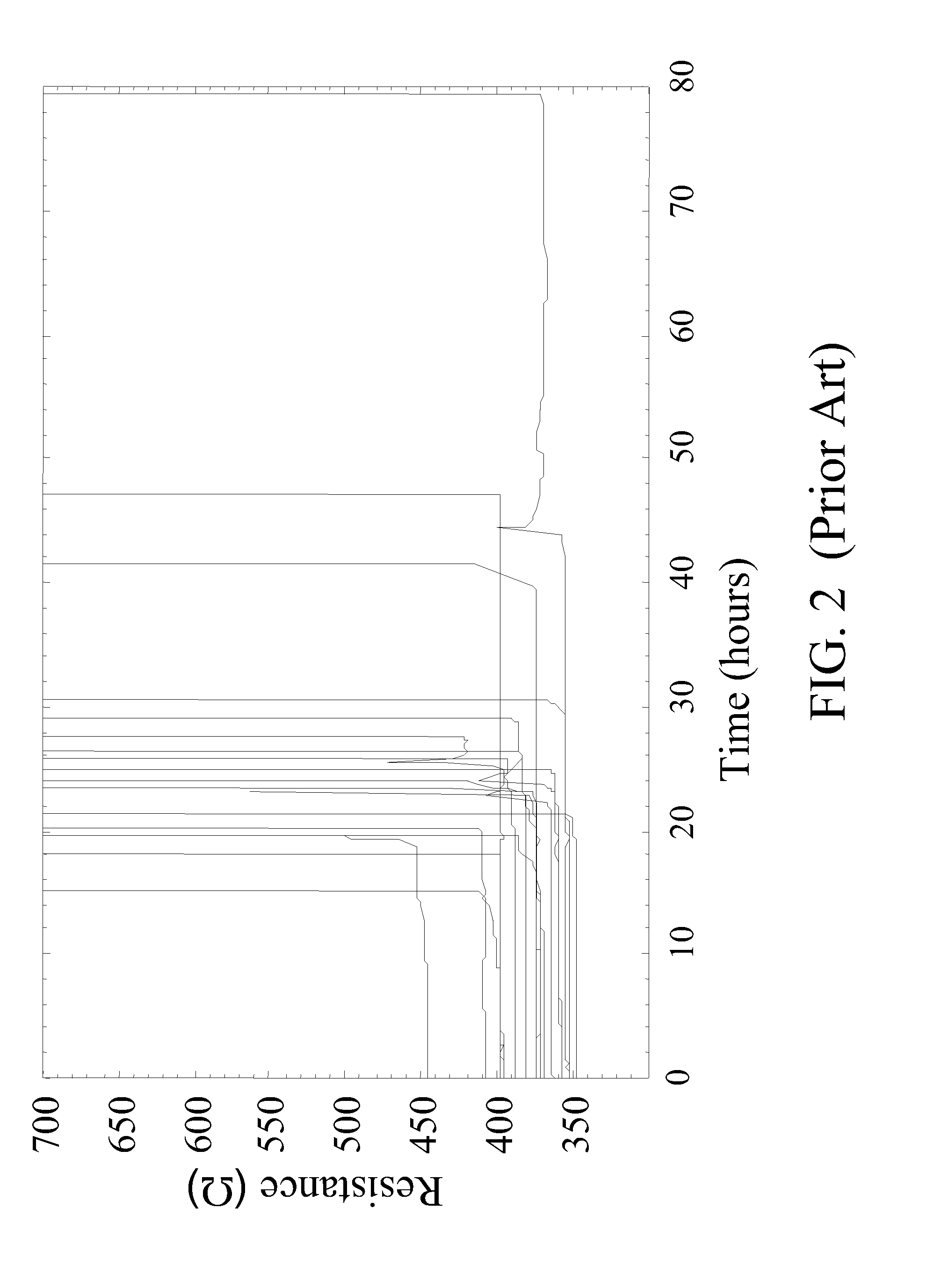Electromigration resistant via-to-line interconnect
a metal interconnect and electromigration resistance technology, applied in the direction of electrical equipment, semiconductor devices, semiconductor/solid-state device details, etc., can solve the problems of metal line or metal via no longer providing a conductive path in the metal interconnect, product failure of semiconductor devices, metal ions to dislodge from the lattice and move physically, etc., to achieve enhanced electromigration resistance of the metal interconnect structure, impede abrupt electromigration failure, and increase the effect of electromigration resistan
- Summary
- Abstract
- Description
- Claims
- Application Information
AI Technical Summary
Benefits of technology
Problems solved by technology
Method used
Image
Examples
first embodiment
[0039]Referring to FIGS. 3A and 3B, a first exemplary metal interconnect structure according to the present invention comprises a lower dielectric material layer 10 containing a line trench 19, which is a trench formed in the shape of a metal line to be subsequently formed for providing a horizontal electrically conductive path. The line trench 19 may be formed integrally with at least one via cavity 19′ directly connected to a recessed surface 15 of the line trench 19, which is formed below a topmost surface 17 of the lower dielectric material layer 10. A boundary between the line trench 19 and the at least one via cavity 19 is represented by a dotted line in FIG. 3A. A semiconductor substrate (not shown) including at least one semiconductor device may be located beneath the lower dielectric material layer 10. The semiconductor substrate may abut the bottom surface of the lower dielectric material layer 10, or at least one intervening metal interconnect structure (not shown) includ...
seventh embodiment
[0085]The maximum distance in the direction connecting the center of mass of the horizontal cross-sectional shape of the conductive via (50, 60) and the center of mass of the cross-sectional shape of the dielectric material portion 12 within the overlap area of the two cross-sectional areas is herein referred to as a lateral overlap distance LOD, which is a measure of the overlay tolerance of the seventh exemplary metal interconnect structure for maintaining a liner-to-liner contact between the upper metallic liner 50 and the lower metallic liner 20. the lateral overlap distance LOD is designed to be greater than maximum lateral overlay variation between the dielectric material portion 12 and the conductive via (50, 60), thereby ensuring the liner-to-liner contact is maintained despite overlay variations during a manufacturing process.
[0086]The current path from the conductive via (50, 60) is in a horizontal direction in the plane of A-A′. The dielectric material portion may be loc...
PUM
| Property | Measurement | Unit |
|---|---|---|
| width | aaaaa | aaaaa |
| temperature | aaaaa | aaaaa |
| dielectric constant | aaaaa | aaaaa |
Abstract
Description
Claims
Application Information
 Login to View More
Login to View More - R&D
- Intellectual Property
- Life Sciences
- Materials
- Tech Scout
- Unparalleled Data Quality
- Higher Quality Content
- 60% Fewer Hallucinations
Browse by: Latest US Patents, China's latest patents, Technical Efficacy Thesaurus, Application Domain, Technology Topic, Popular Technical Reports.
© 2025 PatSnap. All rights reserved.Legal|Privacy policy|Modern Slavery Act Transparency Statement|Sitemap|About US| Contact US: help@patsnap.com



